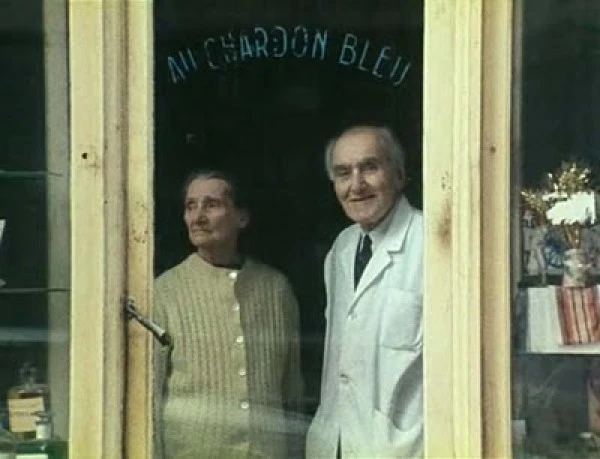With Agnes Varda passing away this week, the internet has been awash in discussions of her films, with suggestions on what films to watch, and where. Though most of us agree that we should all watch Cleo 5 to 7, Varda has such a copious and varied filmography that it can be hard to decide on the next viewing. I’m very limited in my Varda knowledge, so I betook myself to Kanopy, which right now has a number of her films available to stream.

Daguerreotypes is one of Varda’s lesser known documentaries, a calm and moving slice-of-life film about the shopkeepers and tradespeople who lived and worked on the Rue Daguerre, where Varda lived for many years. She says early on that the film was born out of her interest in one particular couple, who run The Blue Thistle, a parfumerie with a group of loyal clientele. Varda’s camera positions itself in the corner of the shop, following the pair as they go about their lives and trade. From there, she expands outward, chronicling the people on the street, where they came from, how they learned their trades, and what they dream of. Much of the latter half of the film is intercut between the daily activities of the tradespeople – a butcher cutting meat, a stylist cutting hair, a baker kneading dough – with a traveling magician who gives a local performance, juxtaposing the everyday skills of the tradespeople with the “magical” abilities of the magician. Daguerreotypes‘ ethos is catalyzed in the association between the daguerreotype photographs of the past, the images of the people framed in their shop windows or at their work, and the notion of both magical and cinematic sleight of hand, resulting in a film that is both a work of love and a magic trick.
For a film that focuses on apparently mundane day-to-day activities, Daguerreotypes is deeply absorbing. Varda imbues her film with a warmth of spirit that emerges from the screen—her love for the people she’s chronicling is in every frame. What might be condescension or a remark on harsh realities from another filmmaker is a labor of love from her. She doesn’t condescend to her neighbors for their trades, nor does she present them as people who have given up on their dreams. There’s a melancholic atmosphere that hangs over some of the scenes, especially nearing the end of the film as the subjects discuss what they dream about or what they might have wanted when they were younger, but none of it comes off as though the camera, or Varda, has judged them.
It is a testament to Varda’s skill that her film, so entrenched in its time period, also manages to remain timeless. The people in Daguerreotypes are long since gone, and certainly the street has changed much since 1976, but they feel real and alive, their lives intensely lived. It is further to Varda’s credit that she both shapes her film and distances herself from it, not presuming to make these people into sources of entertainment or pathos, but of the poetry of the everyday.
Daguerrotypes is available to stream on Kanopy.

